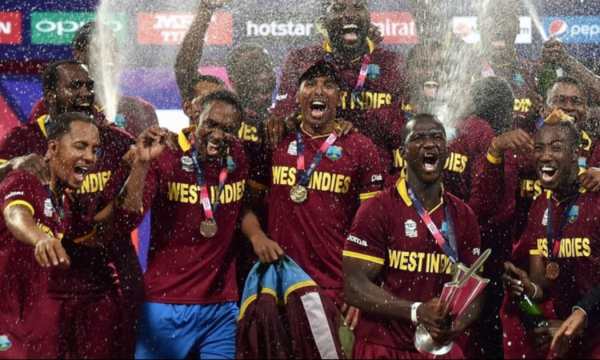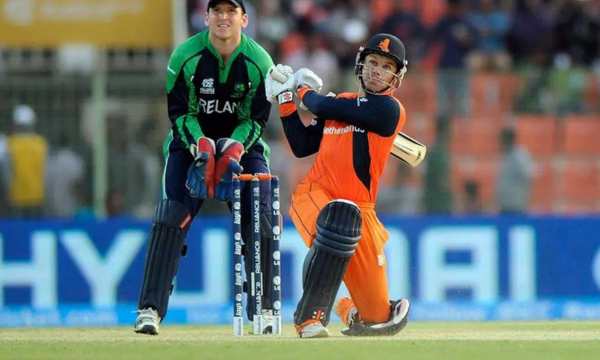T20 World Cup: Everything About the Biggest Cricket Championship
Have you ever wondered why the T20 World Cup fascinates millions of fans around the globe?
Ad
This tournament has revolutionized modern cricket with electrifying matches and unforgettable moments.
Here you will find everything you need to know about this competition that has transformed the sport: from the basic rules to the most inspiring stories.
Get ready for a complete journey through the universe of the T20 World Cup, the tournament that redefined how we experience cricket in the 21st century.
Understanding the Rules and Formats of the Championship
The T20 World Cup follows the Twenty20 format, where each team has only 20 overs (120 balls) to score as many runs as possible.
This accelerated version of traditional cricket is designed to offer continuous action and quick results.
Each match of the tournament generally lasts about three hours, making it perfect for television broadcasts and live spectators.
The tournament starts with a preliminary stage, where lower-ranked teams compete for spots in the main stage. Qualified teams advance to the group stage, facing the already directly qualified powerhouses.
The best teams from each group proceed to the semifinals, and subsequently, the winners compete in the grand final.
Special rules make the game more dynamic, such as the Power Play in the first six overs, when only two fielders can be outside the inner circle.
The Super Over decides tied games, providing moments of extreme tension in the championship.
The T20 World Cup also implements advanced technologies like DRS (Decision Review System) to minimize umpiring errors.
Meet the Participating Teams
Traditional powerhouses like India, England, Australia, and Pakistan always come as title favorites.
The West Indies stand out as the only team to win multiple T20 World Cup titles, demonstrating their perfect adaptation to this format.
Emerging teams like Afghanistan and Bangladesh have shown impressive evolution with each edition.
The Afghans, in particular, have developed a reputation for their world-class spin bowling.
Nations like the Netherlands, Scotland, and the United Arab Emirates regularly participate in the preliminary stages, looking to surprise the giants.
Qualification for the T20 World Cup has become increasingly competitive, reflecting the global growth of the format.
New regional powerhouses like Namibia and Papua New Guinea fight to secure their spots in the main tournament.
The participation of these diverse teams enriches the tournament experience, bringing unique playing styles and distinct cultural passions.

West-Indies-cricket-team-(Source-Google)
Relive All the Achievements of the Championship
The history of the T20 World Cup began in 2007, when India surprised the world by winning the inaugural title under the leadership of MS Dhoni.
Pakistan overcame the disappointment of losing the previous final to win in 2009, demonstrating their characteristic resilience in this dynamic format.
England won their first title in 2010, while Sri Lanka finally achieved glory in 2014 after two lost finals.
The West Indies stand out as the only team to win the tournament twice, with memorable triumphs in 2012 and 2016 that solidified their reputation as format specialists.
Australia, despite their historical dominance in cricket, had to wait until 2021 to finally add the T20 World Cup trophy to their impressive collection.
Each match produced iconic moments that remain etched in fans’ memories: Dhoni’s six, Marlon Samuels’ heroics, and the lethal precision of bowlers like Lasith Malinga.
Epic Games and Historic Comebacks
The T20 World Cup has produced some of the most dramatic moments in cricket history, starting with the inaugural final where India defeated Pakistan by just five runs.
The last over bowled by Joginder Sharma became folklore, with MS Dhoni betting on this relatively unknown player for the decisive moment.
The clash between England and the Netherlands in 2009 resulted in one of the biggest upsets in international cricket.
The small European nation overcame the inventors of the sport in the tournament’s opening game, setting the tone for the unpredictability that defines the competition.
Who can forget the 2016 T20 World Cup final, when Carlos Brathwaite hit four consecutive sixes in the last over against Ben Stokes.
Commentator Ian Bishop’s phrase — “Remember the name!” — became iconic as the West Indies claimed their second title spectacularly.
The 2007 semifinal between India and Australia featured the tournament’s first bowl-out, equivalent to a penalty shootout in soccer.
The 2021 semifinal between Pakistan and Australia offered another intense drama when Matthew Wade hit three consecutive sixes against Shaheen Afridi to seal an improbable victory.
Impressive Numbers of the T20 World Cup
The T20 World Cup has set new benchmarks for what is possible in cricket, with records constantly being broken.
The highest individual score belongs to Dutchman Stephan Myburgh, who scored 222 against Ireland in 2014.
Yuvraj Singh holds the record for six sixes in a single over, achieved against England in the inaugural edition. In team terms, Sri Lanka recorded the highest total with 260/6 against Kenya in 2007.
The lowest total belongs to the Netherlands, who were bowled out for just 39 runs against Sri Lanka in 2014.
In the bowling department, Sri Lanka’s Ajantha Mendis holds the best figures with an impressive 6/8 against Zimbabwe.
Audience participation in the tournament continues to grow, with the 2016 final in Kolkata attracting over 66,000 spectators.
The value of broadcasting rights has increased exponentially since the first edition, reflecting the growing popularity of the format and the expansion of its global fan base.

Stephan-Myburgh-(Source-Google)
What to Expect from Future Editions of the T20 World Cup
The future of the T20 World Cup promises significant expansion, with the ICC planning to increase the number of participating teams in upcoming editions.
This inclusion reflects the commitment to the global growth of the sport beyond traditional cricket nations. The United States will co-host the tournament in 2024, marking a historic moment for the sport.
Technological advances continue to transform the tournament experience for spectators and players. Augmented reality and customizable broadcasts are likely to become integral parts of the viewing experience.
Competitiveness is expected to increase with emerging nations investing heavily in their domestic structures.
Countries like Nepal, Scotland, and the United Arab Emirates are developing their own professional leagues, inspired by the success of the IPL.
This democratization of talent promises more balanced and unpredictable tournaments.
The development of more eco-friendly equipment and sustainable practices in stadiums reflects the growing environmental awareness.
Curiosities Every Fan Should Know
The T20 World Cup was born as a direct response to the declining public interest in longer formats of cricket.
The first tournament in 2007 was planned in just 12 months, an incredibly tight schedule for an international event.
The official trophy weighs an impressive 7.5 kilograms and contains over 4 kilograms of pure silver. India offered approximately $2 million to share among the players after their inaugural victory.
Some fascinating rituals have emerged over the years, such as the tradition of Pakistani players performing collective prayers after major victories.
The youngest player to participate was Afghanistan’s Mujeeb Ur Rahman at just 17 years old. The oldest was Dutchman Ryan ten Doeschate at 41 years old.
Players consume about 40 liters of water in each match under intense heat. The official ball is replaced approximately 18 times per game due to the wear caused by powerful hitters.
The Influence of the T20 World Cup on World Cricket
The tournament inspired the emergence of domestic leagues such as the IPL, BBL, and CPL, which now form the economic ecosystem of modern cricket.
These competitions generate lucrative opportunities for players and significantly expand the sport’s fan base.
Players have adapted their skills specifically to shine in the T20WC, developing innovative deliveries and unconventional batting techniques.
The accelerated format has encouraged superior athleticism and more pronounced specialization among professionals.
Tactics previously considered risky have become standard strategies as teams seek competitive advantages in the tournament’s high-pressure environment.
The tournament has helped democratize cricket, allowing smaller nations to compete more equally with traditional powerhouses.
Countries like Afghanistan and Nepal have experienced exponential growth in their domestic structures after inspiring participations.
The tournament’s commercial impact has transformed the financial sustainability of cricket in emerging markets.
This injection of resources funds grassroots development programs and improves infrastructure in nations where cricket is growing.
Final Considerations
Since its inception in 2007, the championship has transformed into the ultimate platform where tradition meets innovation in the world of cricket.
The unforgettable moments produced in each edition have transcended the sport, creating lasting legacies that inspire new generations of players and fans.
As the T20 World Cup continues to evolve, its impact on the development of global cricket only grows.
The inspiring stories, intense rivalries, and moments of individual brilliance ensure that each edition of the tournament adds exciting new chapters to the rich tapestry of international cricket.
FAQ
What are the main differences between the T20 World Cup and the ODI World Cup?
How exactly does the Power Play work in the T20 World Cup?
Which player has scored the most runs in T20 World Cup history?
How does the DRS technology mentioned in the text work exactly?
Is there a women’s version of the T20 World Cup?
 Want to Watch Live Cricket on Your Phone? Check Out the Best Apps
Want to Watch Live Cricket on Your Phone? Check Out the Best Apps
Watching live cricket on the go has never been easier. Ad With stronger networks and smarter streaming, fans now have reliable options to follow every matches […]
Keep reading Essential Apps and Tips for Building a Winning Fantasy Cricket Team
Essential Apps and Tips for Building a Winning Fantasy Cricket Team
Building a reliable fantasy cricket team is easier when you combine match awareness, disciplined strategy, and the right tools. Ad In the past month, the fantasy […]
Keep reading Cricket Tips: How to Get Started, Equipment, and Basic Shots
Cricket Tips: How to Get Started, Equipment, and Basic Shots
Cricket might look complex at first glance, yet its charm lies in teamwork, strategy, and the thrill of every delivery. Ad In today’s article, you’ll find […]
Keep reading